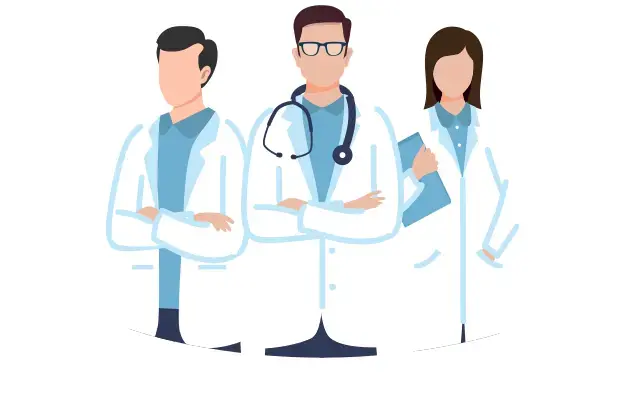What Happens In Grade 1 Piles Treatment
Diagnosis
The diagnostic procedure for grade 1 piles isn’t too complicated. The doctor generally starts by performing a physical examination. During this assessment, the doctors may ask various questions about the symptoms you’re experiencing, your medical history, lifestyle habits, and so on.
After that, the doctor might carry out a visual examination of the anus, which is often enough to diagnose piles. Following the visual inspection, the doctor might perform some other tests as well, such as:
- Digital rectal exam: It involves inserting a gloved and lubricated finger into the rectum to check for abnormal growth.
- Anoscopy, Sigmoidoscopy and Colonoscopy: In these tests, the doctor uses small devices with a camera to look for abnormalities in the anorectal region i.e., anus, rectum, and colon. The device, with a fibre optic camera, is inserted into the rectum. The camera helps doctors get a clear view of the inside area and lets them assess the haemorrhoid growth up close.
Treatment
Non-surgical treatment for grade 1 piles – After thoroughly diagnosing the condition, the doctor chalks out a personalized treatment plan for the patient. Typically, grade 1 piles go away on their own within some time, and treatment generally aims at relieving the symptoms caused by the condition. Surgery is rarely needed in the case of grade 1 piles. Some non-surgical treatment options available for grade 1 piles are as follows:
- Over-the-counter solutions: Grade 1 piles can be managed through over-the-counter medications such as Tucks hydrocortisone ointment, and Analpram and Proctofoam. These medicines are generally considered the best OTC hydrocortisone creams for haemorrhoid treatment. These creams generally help reduce swelling, inflammation, and itching caused by piles.
- Pain relievers: The doctor might prescribe aspirin and ibuprofen to relieve the pain caused by haemorrhoids.
- Stool softeners: A leading cause of haemorrhoids is constipation, as it causes straining during bowel movement. Therefore, doctors prescribe stool softeners and laxatives to help you pass stools easily and prevent the condition from worsening.
- Corticosteroids: Corticosteroids are steroid creams and ointments that help decrease inflammation, itching, or pain caused by grade 1 piles.


Sclerotherapy for grade 1 piles – Sclerotherapy is considered an effective treatment for internal grade 1 Piles and relieves the symptoms significantly. In this procedure, the doctor injects a chemical solution called sclerosant into the piles. The solution causes scar tissue to form, which causes the piles to shrink without causing any discomfort or bleeding.
This procedure might involve one or more sittings. In general, the piles shrink entirely within 5 to 6 weeks of the procedure.
 Aditya Birla Health Insurance Co. Ltd.
Aditya Birla Health Insurance Co. Ltd.
 National Insurance Co. Ltd.
National Insurance Co. Ltd.
 Bajaj Allianz General Insurance Co. Ltd
Bajaj Allianz General Insurance Co. Ltd
 Bharti AXA General Insurance Co. Ltd.
Bharti AXA General Insurance Co. Ltd.
 Future General India Insurance Co. Ltd.
Future General India Insurance Co. Ltd.





















.svg)




